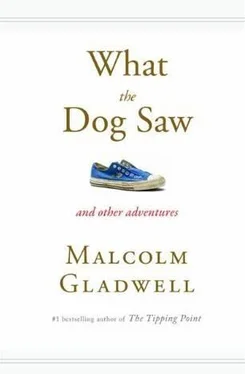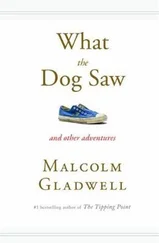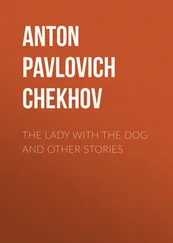The world’s leading expert on ketchup’s early years is Andrew F. Smith, a substantial man, well over six feet, with a graying mustache and short wavy black hair. Smith is a scholar, trained as a political scientist, intent on bringing rigor to the world of food. When we met for lunch not long ago at the restaurant Savoy in SoHo (chosen because of the excellence of its hamburger and French fries, and because Savoy makes its own ketchup – a dark, peppery, and viscous variety served in a white porcelain saucer), Smith was in the throes of examining the origins of the croissant for the upcoming Oxford Encyclopedia of Food and Drink in America, of which he is the editor-in-chief. Was the croissant invented in 1683, by the Viennese, in celebration of their defeat of the invading Turks? Or in 1686, by the residents of Budapest, to celebrate their defeat of the Turks? Both explanations would explain its distinctive crescent shape – since it would make a certain cultural sense (particularly for the Viennese) to consecrate their battlefield triumphs in the form of pastry. But the only reference Smith could find to either story was in the Larousse Gastronomique of 1938. “It just doesn’t check out,” he said, shaking his head wearily.
Smith’s specialty is the tomato, however, and over the course of many scholarly articles and books – “The History of Home-Made Anglo-American Tomato Ketchup,” for Petits Propos Culinaires, for example, and “The Great Tomato Pill War of the 1830s,” for The Connecticut Historical Society Bulletin – Smith has argued that some critical portion of the history of culinary civilization could be told through this fruit. Cortez brought tomatoes to Europe from the New World, and they inexorably insinuated themselves into the world’s cuisines. The Italians substituted the tomato for eggplant. In northern India, it went into curries and chutneys. “The biggest tomato producer in the world today?” Smith paused, for dramatic effect. “ China. You don’t think of tomato being a part of Chinese cuisine, and it wasn’t ten years ago. But it is now.” Smith dipped one of my French fries into the homemade sauce. “It has that raw taste,” he said, with a look of intense concentration. “It’s fresh ketchup. You can taste the tomato.” Ketchup was, to his mind, the most nearly perfect of all the tomato’s manifestations. It was inexpensive, which meant that it had a firm lock on the mass market, and it was a condiment, not an ingredient, which meant that it could be applied at the discretion of the food eater, not the food preparer. “There’s a quote from Elizabeth Rozin I’ve always loved,” he said. Rozin is the food theorist who wrote the essay “Ketchup and the Collective Unconscious,” and Smith used her conclusion as the epigraph of his ketchup book: ketchup may well be “the only true culinary expression of the melting pot, and… its special and unprecedented ability to provide something for everyone makes it the Esperanto of cuisine.” Here is where Henry Heinz and the benzoate battle were so important: in defeating the condiment Old Guard, he was the one who changed the flavor of ketchup in a way that made it universal.
There are five known fundamental tastes in the human palate: salty, sweet, sour, bitter, and umami. Umami is the proteiny, full-bodied taste of chicken soup, or cured meat, or fish stock, or aged cheese, or mother’s milk, or soy sauce, or mushrooms, or seaweed, or cooked tomato. “Umami adds body,” Gary Beauchamp, who heads the Monell Chemical Senses Center, in Philadelphia, says. “If you add it to a soup, it makes the soup seem like it’s thicker – it gives it sensory heft. It turns a soup from salt water into a food.” When Heinz moved to ripe tomatoes and increased the percentage of tomato solids, he made ketchup, first and foremost, a potent source of umami. Then he dramatically increased the concentration of vinegar, so that his ketchup had twice the acidity of most other ketchups; now ketchup was sour, another of the fundamental tastes. The post-benzoate ketchups also doubled the concentration of sugar – so now ketchup was also sweet – and all along ketchup had been salty and bitter. These are not trivial issues. Give a baby soup, and then soup with MSG (an amino-acid salt that is pure umami), and the baby will go back for the MSG soup every time, the same way a baby will always prefer water with sugar to water alone. Salt and sugar and umami are primal signals about the food we are eating – about how dense it is in calories, for example, or, in the case of umami, about the presence of proteins and amino acids. What Heinz had done was come up with a condiment that pushed all five of these primal buttons. The taste of Heinz’s ketchup began at the tip of the tongue, where our receptors for sweet and salty first appear, moved along the sides, where sour notes seem the strongest, then hit the back of the tongue, for umami and bitter, in one long crescendo. How many things in the supermarket run the sensory spectrum like this?
A number of years ago, the H. J. Heinz Company did an extensive market-research project in which researchers went into people’s homes and watched the way they used ketchup. “I remember sitting in one of those households,” Casey Keller, who was until recently the chief growth officer for Heinz, says. “There was a three-year-old and a six-year-old, and what happened was that the kids asked for ketchup and Mom brought it out. It was a forty-ounce bottle. And the three-year-old went to grab it himself, and Mom intercepted the bottle and said, ‘No, you’re not going to do that.’ She physically took the bottle away and doled out a little dollop. You could see that the whole thing was a bummer.” For Heinz, Keller says, that moment was an epiphany. A typical five-year-old consumes about 60 percent more ketchup than a typical forty-year-old, and the company realized that it needed to put ketchup in a bottle that a toddler could control. “If you are four – and I have a four-year-old – he doesn’t get to choose what he eats for dinner, in most cases,” Keller says. “But the one thing he can control is ketchup. It’s the one part of the food experience that he can customize and personalize.” As a result, Heinz came out with the so-called EZ Squirt bottle, made out of soft plastic with a conical nozzle. In homes where the EZ Squirt is used, ketchup consumption has grown by as much as 12 percent.
There is another lesson in that household scene, though. Small children tend to be neophobic: once they hit two or three, they shrink from new tastes. That makes sense, evolutionarily, because through much of human history that is the age at which children would have first begun to gather and forage for themselves, and those who strayed from what was known and trusted would never have survived. There the three-year-old was, confronted with something strange on his plate – tuna fish, perhaps, or Brussels sprouts – and he wanted to alter his food in some way that made the unfamiliar familiar. He wanted to subdue the contents of his plate. And so he turned to ketchup, because, alone among the condiments on the table, ketchup could deliver sweet and sour and salty and bitter and umami, all at once.
A few months after Jim Wigon’s visit to Zabar’s, Edgar Chambers IV, who runs the sensory-analysis center at Kansas State University, conducted a joint assessment of World’s Best and Heinz. He has seventeen trained tasters on his staff, and they work for academia and industry, answering the often difficult question of what a given substance tastes like. It is demanding work. Immediately after conducting the ketchup study, Chambers dispatched a team to Bangkok to do an analysis of fruit – bananas, mangoes, rose apples, and sweet tamarind. Others were detailed to soy and kimchi in South Korea, and Chambers’s wife led a delegation to Italy to analyze ice cream.
Читать дальше












